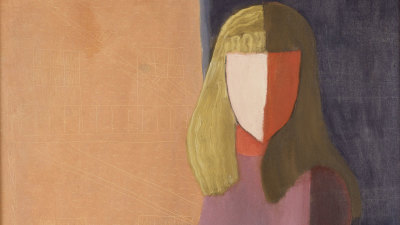A beginner’s guide to William Kentridge
A beginner’s guide to William Kentridge
Published 19 July 2022
William Kentridge has been experimenting with materials and storytelling since the 1980s. Here’s everything you need to know about the South African artist.
-
-

His work is immersive
Kentridge’s 40-year career combines drawing, writing, theatre, puppetry, opera, film, dance, sculpture, tapestry and performance. The works are huge in scope but also huge in scale: there are floor-to-ceiling drawings, four-metre tapestries, multi-screen films, mechanised theatre sets, and stage performances with huge casts.
His source material is vast – he draws inspiration from African porters in the First World War and the Russian Revolution. He melds geographies, visual and technical histories, with layers of artistic and political references. His navigational axis runs between Europe, Africa and China, between the past, present and future unfolding from that history. Music flows through nearly all of it, ranging from Mozart and Hindemith to African brass bands.
-
-
-

He “was reduced to being an artist”
Take heart that Kentridge didn’t come to his work fully formed. In fact, by all accounts his early career was muddled and a bit directionless. He’s quoted as saying: “I was reduced to being an artist”.
Initially, Kentridge attended art college to study painting but left because he was “a very bad painter” (his words). So, he switched to acting, then to filmmaking, and then – after failing at all three – returned to art. Over the last four decades, his work has harnessed and expanded on all those elements he ‘failed’ at when he first began.
-
-
-

Drawing is central to his practice
Drawing is the starting point to nearly all of Kentridge’s work. He sees drawing as “a testing of ideas, a slow-motion version of thought”.
Charcoal is the medium he works with most; it’s easy to rub out and you can change your composition “as quickly as you can change your mind”. More recently he has also been working with Indian ink.
As a thoughtful animator with a boundless imagination, Kentridge transforms a static image into a kinetic scene – a typewriter becomes a tree; a cat curls itself into a cartoon-bomb; a man in a suit on the beach skims a stone over the waves. Other times, Kentridge’s drawings are the basis for performances, installations and operas, a sort of multi-faceted drawing in different dimensions with movement and sound.
-
-
-

His parents were anti-apartheid activists
Kentridge’s parents, both lawyers, were anti-apartheid to their bones.
William’s father Sir Sydney Kentridge represented three recipients of the Nobel Prize during his career: Nelson Mandela, Archbishop Desmond Tutu and Chief Albert Luthuli. He played a leading role in the Treason Trial (1956–61), and defended the family of activist Steve Biko during the inquest into his death in police custody (1977).
Kentridge’s mother Felicia (born Felicia Geffen) co-founded the South Africa Legal Resources Centre, a human rights organisation that still provides free legal services to marginalised people today.
In 2010, Tottenham MP David Lammy called Sir Sydney Kentridge one of his heroes: “Kentridge is one of many lawyers to whom I will forever be in debt, and whose everyday fights against injustice should inspire us all.”
-
-
-

Africa’s colonial past is woven into his work
Kentridge’s work responds to the injustices of apartheid and the legacies of colonialism.
His art is by no means documentary – it’s fragmentary, humorous, and leaves room for ambiguity. In one work a coffee plunger drills down through the earth into the depths of a gold mine beneath Johannesburg. In another, blue water flows from the breast pocket of a man in a striped suit, a pool rising around him in what seems to be his melancholy and grief.
Real events inform his work: Ubu Tells the Truth (1997) combines testimonies from South Africa’s Truth and Reconciliation Commission (1996-2003) with Alfred Jarry’s 1896 play Ubu Roi (Ubu the King) and Jane Taylor’s 1997 drama Ubu and the Truth Commission, which was directed on stage by Kentridge. In his reimagining, the protagonist Ubu becomes an agent of the secret police during Apartheid.
Felix in Exile (1994) was made just before the first general election in South Africa and questioned the way in which the people would remember those who died in the fight against apartheid.
Some of these works feature Kentridge’s alter egos Felix Teitelbaum (the titular figure from Felix in Exile) and Soho Eckstein, the former a compassionate figure and the latter a ruthless capitalist.
-
-
-

He established The Centre for the Less Good Idea in 2016
Taking its name from the Tswana proverb – “If the good doctor can’t cure you, find the less good doctor” – The Centre for the Less Good Idea in Johannesburg is used by young artists to experiment. It presents a twice-yearly programme of public performances and offers workshops and mentorship activities.
The concept came from Kentridge’s own practice and is very much based on the idea that failure can inspire a creative response in the search for an alternative solution.
-
-
-
Book tickets to 'William Kentridge'
24 September — 11 December 2022
This autumn, William Kentridge stages his biggest UK exhibition, in a show spanning his 40-year career.
Visitors will find four-metre wide tapestries, his signature charcoal trees and flowers, and the breathtaking three-screen film, Notes Towards a Model Opera. Many pieces have never been seen before, and some have been made specially for our show and galleries.

-










